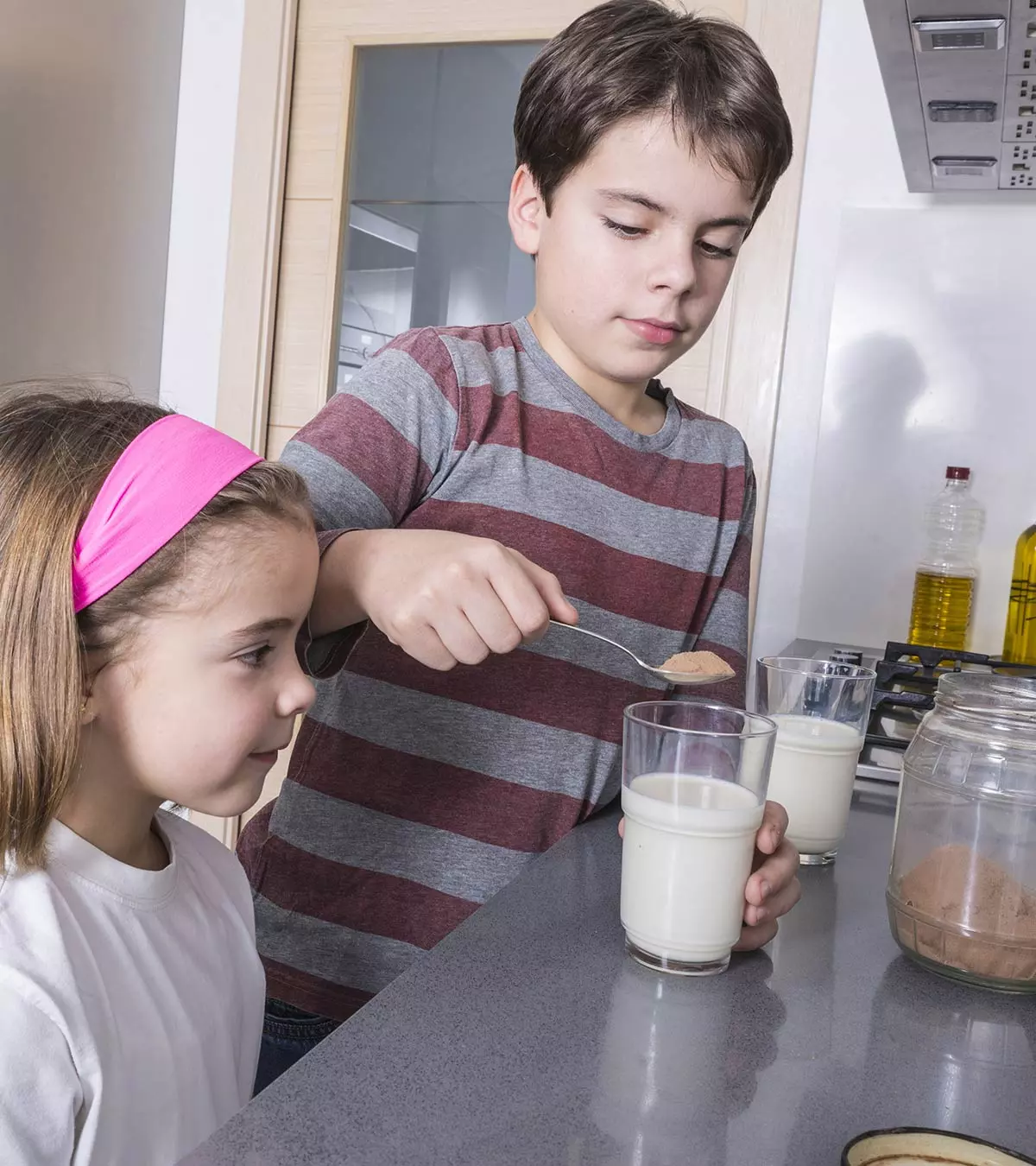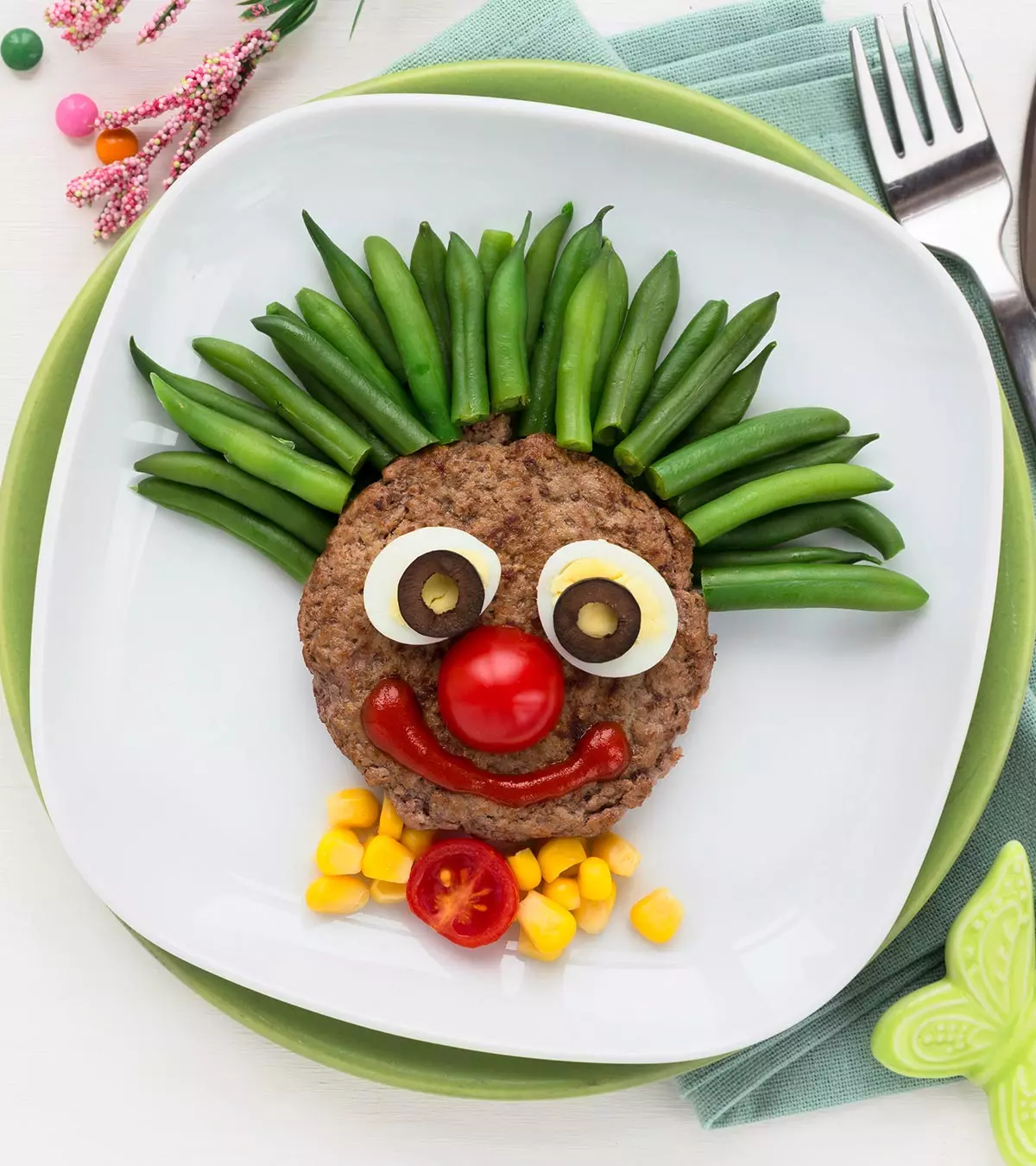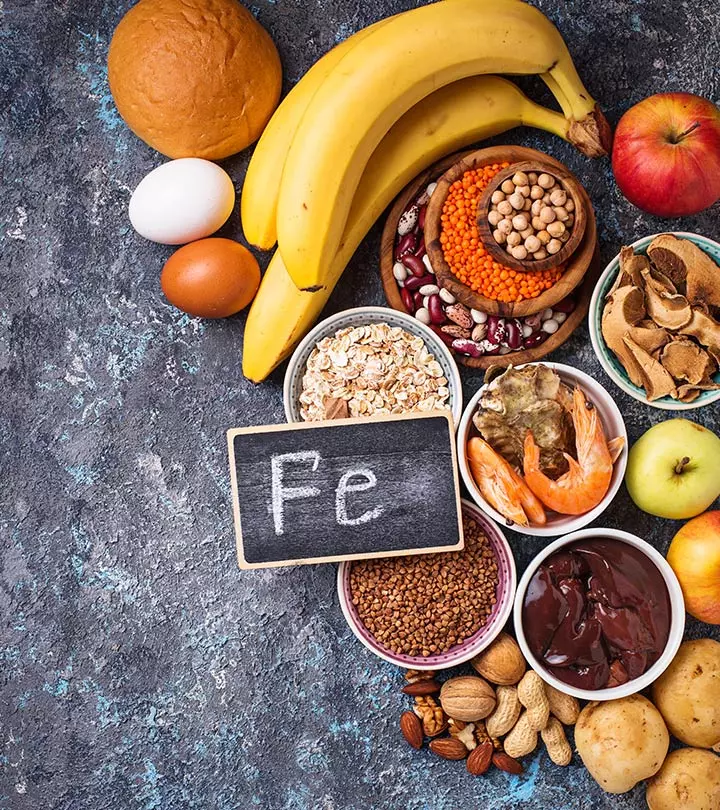
Image: ShutterStock

There are numerous health benefits of milk for kids, including its high nutritional content. However, getting children to drink milk might be tiresome for some parents. You might have to run after your child with a glass of milk, or your child might come with all the excuses to avoid drinking milk.
While trying to introduce cow’s milk into your child’s daily diet, you may wonder whether your child should drink buffalo milk, goat milk, or a milk substitute such as soy milk.
Read on to know about the health benefits of various milk sources and how much your child should drink.
Key Pointers
- Milk is considered a whole food, as it provides several essential nutrients.
- Consumption of milk regularly aids in the proper growth and development of the child.
- Milk has high calcium and vitamin D that help promote bone growth, improve brain function, and boost immunity.
- The quantity of milk should be regulated according to the child’s age, height, and lactose intolerance status.
- Milk is diverse and can be incorporated into smoothies, cereal, pasta, and even flavored to make it more palatable.
What Are The Health Benefits Of Milk For Kids?
When it comes to choosing healthy foods for kids, milk is usually one of the primary choices. Drinking milk has many benefits for your kids. Not only does it give your kids strong and healthy bones, but also provides the much needed nourishment for your kids’ overall growth and development. Drinking milk every day will also help your kids maintain overall good health. Here are some milk benefits for kids:
1. Milk is rich in calcium
Milk is one of the best calcium foods for kids that your child can consume. One glass of milk each day could help your child develop the necessary bone health and may help prevent complex bone ailments, such as osteoporosis.
- It keeps bones and teeth healthy and strong and prevents bone loss.
- It helps prevent childhood obesity.
- The recommended amount of daily calcium helps blood clotting
- Calcium is also important for the functioning of the brain and nervous system.
- It helps release hormones from your kid’s body.
- It helps to keep your child’s muscles strong (1).
2. Vitamin D in fortified milk
Vitamin D helps your kid’s body absorb calcium from various sources.
- Fortified milk contains ample amounts of Vitamin D.
- It helps promote bone growth in your child
- Vitamin D can help to reduce inflammation. It helps boost your kid’s immune system.
- Vitamin D deficiencies can escalate to various conditions like osteoporosis in later years or rickets during childhood (2).
3. Healthy teeth
Milk is rich in calcium and phosphorus, which are crucial to children’s s dental health and tooth development.
- Calcium and phosphorus together help to maintain the health of your kid’s teeth.
- One of the most important proteins found in milk is casein. It helps to form a thin film on your kid’s teeth’s enamel surface and helps to prevent the loss of calcium and phosphate.
- Many dentists will recommend your kid should drink only milk in between meals, in addition to water. It is because drinking milk does not cause tooth decay.
4. Good for blood pressure levels
Drinking milk can help your kid’s blood pressure levels stay in check.
- According to studies, your kids should consume at least three servings of dairy each day along with a healthy and balanced diet (3).
- Consuming milk along with a low salt diet keeps your kid’s blood pressure levels in check (4).
5. Helps stay hydrated
Your kid should drink lots of fluids throughout the day to stay hydrated.
- Drinking milk is a great way for your kid to stay hydrated.
- It is especially important for your kid to rehydrate after a strenuous workout or any stressful physical activity.
6. Supplies essential minerals and vitamins
- Milk contains healthy vitamins and minerals, which keep your little one active, healthy, and strong.
- The vitamins and minerals present in milk are important for your kid’s eyesight.
- Carbohydrates present in milk supply adequate energy and protect your kid from feeling lethargic or tired.
- Milk provides protein, which helps your kid’s body repair itself and growth (1).
 Quick fact
Quick factNutritional Importance Of Milk For Kids
Here is a complete list of essential nutrients present in milk, which helps in improving your kid’s health conditions naturally:
1. Calcium
It helps in building healthy bones and teeth in kids and developing bone mass.
2. Protein
Protein serves as the best source of energy. It also helps in building and repairing your kid’s muscle tissues.
3. Phosphorous
It helps in strengthening the bones, which helps in performing the daily tasks.
4. Potassium
It helps in maintaining a healthy blood pressure level and reducing the risk of cardiovascular diseases.
5. Vitamin D
It helps in improving bone density.
6. Vitamin B12
It helps in maintaining the healthy red blood cells and nerve tissue.
7. Vitamin A
The nutrient improves your kid’s normal vision and skin health. It also helps to boost the immune system.
8. Riboflavin (Vitamin B2)
It helps in converting food into energy.
9. Niacin
It helps in metabolizing the sugars and fatty acids in your kid’s body (5).
How Much Milk Should Your Kid Drink Regularly?
The amount (or glasses) of milk your kid should drink daily primarily depends on several factors like age, height and whether they are lactose intolerant.
Here we discuss the appropriate quantity of milk that an average kid should consume on a regular basis:
Ages 1 to 2:
- Once your child is 12 months old, you can introduce cow’s milk in their diet plan.
- Kids of the age group 1 and 2 years need a high-fat diet for healthy brain development.
Ages 2 to 8:
- Kids of the age group 2 to 3 years should drink at least 2 cups of milk every day.
- Kids of age group 4 to 8 years can consume 2.5 cups of milk or alternative milks per day.
Can You Substitute Milk With Other Dairy Products?
Milk and other dairy products, like cheese and yogurt, are rich sources of calcium, protein and vital nutrients that are necessary for your kid’s growth and brain development. If your child does not like to drink milk, you can include other calcium-rich dairy products in her diet. These include cottage cheese, regular cheese, and yogurt.
Umaima, a mother of two and a food writer, shares how she uses lassi (a yogurt–based beverage) as a substitute for milk. She says, “I often interchange Nabeel’s evening glass of milk with a glass of lassi. In the morning, I set curds with the same amount of milk he drinks, and by evening, the milk is transformed into luscious homemade curds that can be blended into a lassi with some sugar. The nutrients and goodness remain the same while the taste and experience are different and yummy for a change (i).”
Best Milk For Kids
According to a survey by the Centers for Disease Control and Prevention, many young individuals and teenagers select milk as their favorite morning drink. The results reveal that milk is the preferred breakfast beverage for 59.7% of children between the ages of two and five, 47.3% of individuals aged six to 11, and 31.5% of adolescents aged 12 to 19. Many parents think that their children should only drink cow’s milk. But different varieties of milk and dairy products that are safe for children are available in the markets.
Here is a complete list of different milk varieties, which your kid can consume safely:
- Organic cow’s milk
- Whole cow’s milk
- Low-fat cow’s milk
- Lactose-free cow’s milk
- Goat’s milk
- Almond milk
- Soy milk
- Evaporated milk
- Condensed milk
- Rice milk
- Coconut milk
- Pea protein milk
 Quick fact
Quick factFun Ways To Include Milk In Your Kid’s Diet
It can be difficult to get children to drink milk. Try some of these tricks to add milk to your kid’s diet.
1. Mask It Under A Different Flavor
- Try out different flavors that you can add to your kid’s glass of milk. While chocolate may be a clear winner, try adding other new flavors like berries, vanilla, banana and more.
- To make it a little healthier, you can also try adding spices like cardamom, cinnamon or even ginger.
2. Sneak It In Smoothies
Your kid may have a taste for yogurt smoothies, but try it out with milk too, and make a healthy drink for kids.
- Whip up a delicious smoothie with fruits that your kid may otherwise not like.
- Add a dollop of honey to give it a burst of taste and health.
3. Iced Milk
Why not try making some delicious and healthy iced milk at home for your kid?
- Use milk as the main base and add whatever other ingredients you would wish to like. Make sure you whip it well to make it creamy and even frothy.
- Once done, put it in the fridge and let it chill. While serving, add some chopped fruits to add more taste and health.
4. Cereals And Oats
Add some milk to your kid’s bowl of cereals and oats
- Add either hot or cold milk to your kid’s bowl of cereal.
- Add enough milk so that the oats or cereal submerges completely. It should be eaten quickly, as cereal with milk can turn soggy quickly.
5. Add It In Pasta
You can also use milk to make some delicious pasta in white sauce. Instead of using cream or cheese, try to make the pasta more interesting by adding milk. You can add butter and cheese if needed and also include a handful of chopped vegetables.
- Instead of using cream or cheese, try to make the pasta more interesting by adding milk. You can add butter and cheese if needed and also include a handful of chopped vegetables.
- All kids love pasta and your kid too will enjoy the delicious taste of pasta in white sauce, which sneaks into the milk.
Frequently Asked Questions
1. Are there any side effects of drinking too much milk for children?
Very high milk consumption in children may cause problems such as iron-deficiency anemia (milk is not a good source of iron) and protein loss from the gut (a rare consequence of anemia) (7) (8). Studies have also linked childhood obesity to excessive milk consumption (9).
2. How does milk help in maintaining a healthy weight in children?
Milk may help maintain a healthy weight in children, possibly due to the beneficial roles of calcium, dairy fat, and proteins on fat metabolism and excretion. It also may have a positive impact on appetite (whole milk keeps you full for long) and the metabolic activity of gut microbiota (10) (11).
3. What are the different milk fortifications available for children?
Milk is usually fortified with vitamins A and D for children (12).
4. Is skim or whole milk better for kids?
Dietician Adrienne Raimo opines, “Deciding whether kids should drink skim or whole milk depends on their health needs. For example, if you have an underweight child, consider whole milk over skim milk because it has more calories.”
Getting your kid to finish their glass of milk can be a struggle, so try these simple tricks. Milk is one of the healthiest drinks your kid can have, so make sure that you include some milk to your kid’s daily diet.
Infographic: Fun Ways To Include Milk In Your Child’s Diet
Milk is a vital component of a healthy diet for children, providing a range of nutrients, including protein, calcium, and vitamin D. While some children may drink milk regularly without hassles, others may be less enthusiastic. If your child is the latter type, scroll through the infographic below for exciting ideas to incorporate milk into their diet. Illustration: Momjunction Design Team
Illustration: Amazing Benefits Of Milk For Kids

Image: Stable Diffusion/MomJunction Design Team
Personal Experience: Source
MomJunction articles include first-hand experiences to provide you with better insights through real-life narratives. Here are the sources of personal accounts referenced in this article.
i. Easy & creative ways to serve milk to kids.https://beingamommyblog.wordpress.com/2016/02/05/easy-creative-ways-to-serve-milk-to-kids/
References
- Calcium in diet.
https://medlineplus.gov/ency/article/002412.htm - Vitamin D.
https://ods.od.nih.gov/factsheets/VitaminD-HealthProfessional/ - Dietary Recommendations for Healthy Children.
https://www.heart.org/en/healthy-living/healthy-eating/eat-smart/nutrition-basics/dietary-recommendations-for-healthy-children#:~:text= - Vitamin B.
https://www.betterhealth.vic.gov.au/health/healthyliving/vitamin-b - Valeria Polzonetti et al.; Dietary Intake of Vitamin D from Dairy Products Reduces the Risk of Osteoporosis; (2025).
https://www.ncbi.nlm.nih.gov/pmc/articles/PMC7353177/ - What is the best milk for children?
https://www.childrens.com/health-wellness/what-is-the-best-milk-for-children - Is your child drinking too much milk.
https://riseandshine.childrensnational.org/is-your-child-drinking-too-much-milk/# - Karolina Graczykowska et al.; (2025); The Consequence of Excessive Consumption of Cow’s Milk: Protein-Losing Enteropathy with Anasarca in the Course of Iron Deficiency Anemia—Case Reports and a Literature Review.
https://www.ncbi.nlm.nih.gov/pmc/articles/PMC8000842/ - Yoowon Kwon et al.; (2025); Is High Milk Intake Good for Children’s Health? A National Population-Based Observational Cohort Study.
https://www.ncbi.nlm.nih.gov/pmc/articles/PMC8541527/ - Anestis Dougkas and Ditte Hobbs; (2025); The Role of Milk and Dairy Products in the Development of Obesity and Cardiometabolic Disease.
https://idp.springer.com/authorize?response_type=cookie&client_id=springerlink&redirect_uri=https%3A%2F%2Flink.springer.com%2Freferenceworkentry%2F10.1007%2F978-3-030-14504-0_163 - The Full-Fat Paradox: Whole Milk May Keep Us Lean.
https://www.npr.org/sections/thesalt/2014/02/12/275376259/the-full-fat-paradox-whole-milk-may-keep-us-lean - Questions and Answers on FDA’s Fortification Policy.
https://www.fda.gov/media/94563/download
Community Experiences
Join the conversation and become a part of our nurturing community! Share your stories, experiences, and insights to connect with fellow parents.
Read full bio of Dr. Jessica Madden
- Adrienne Raimo is an integrative & functional dietitian with a private practice in Columbus, Ohio, and extended service to clients outside the state and country. She has received her degrees from The Ohio State University and additional certification from Columbia University, Cornell University, and the Institute for Integrative Nutrition.
 Adrienne Raimo is an integrative & functional dietitian with a private practice in Columbus, Ohio, and extended service to clients outside the state and country. She has received her degrees from The Ohio State University and additional certification from Columbia University, Cornell University, and the Institute for Integrative Nutrition.
Adrienne Raimo is an integrative & functional dietitian with a private practice in Columbus, Ohio, and extended service to clients outside the state and country. She has received her degrees from The Ohio State University and additional certification from Columbia University, Cornell University, and the Institute for Integrative Nutrition.
Read full bio of Ria Saha
Read full bio of Swati Patwal
Read full bio of Dr. Joyani Das



















